Of all the different photography genres, few transport the viewer into new, unseen worlds quite like macro flower photography. This close-up photography style reveals intricate details of petals, textures, and colors that often go unnoticed by the naked eye. Whether you’re a beginner or an experienced photographer, flower photography offers a rewarding and accessible way to explore your creativity. With blooming subjects available in your local garden, backyard, or neighborhood park, you don’t have to travel far to capture nature’s delicate beauty. Mastering macro techniques, choosing the right gear, and learning how to shoot in various lighting conditions can take your flower photos to the next level.
In this post, you will learn:
- The best lighting and weather conditions for flower photography
- How to choose lenses and camera settings for sharp macro images
- Composition tips for creating dynamic and artistic flower photos
- Techniques to photograph flowers in challenging or indoor environments
- Gear recommendations, including top Tamron lenses for macro flower photography
You can photograph flowers in many ways, including natural light, reflective lighting, macro photography, or abstract compositions. They offer endless opportunities for artistic expression. Here are some simple steps to get you started with macro flower photography.
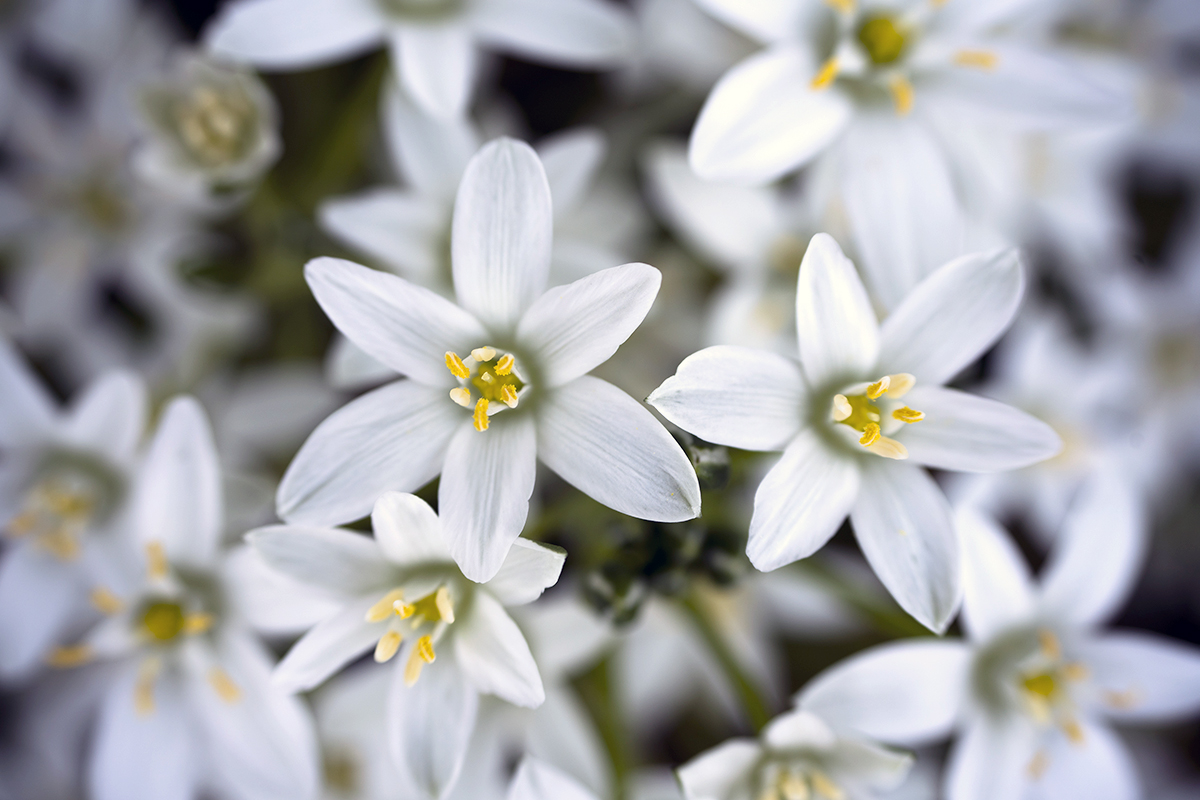
TIP 1: Best Lighting for Flower Photography
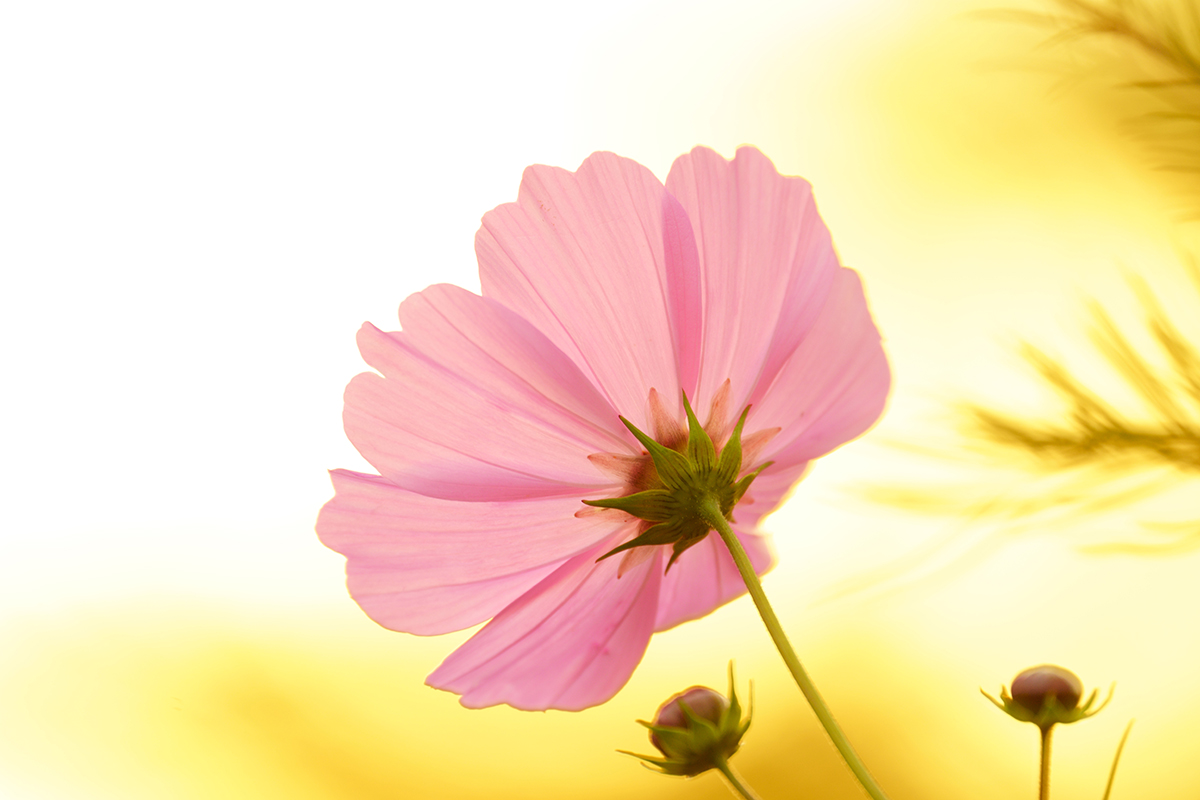
Best Time of Day for Flower Photography
The best time for flower photography—especially macro flower photography—is early morning or late afternoon, when the sunlight is softer and more flattering. These golden hours offer ideal natural light for photographing flowers, reducing harsh shadows and enhancing fine detail. Whenever possible, avoid using flash; instead, rely on soft, diffused natural light to highlight the intricate textures in your close-up flower photos.
Create Dreamy Flower Images with Backlighting
When flowers are backlit by the sun, you can create ethereal, dreamy images that glow with warmth. Backlighting not only adds depth but also helps your floral subject stand out from a darker background. When using this technique, expose for the brightest part of the flower to retain color and detail.
Use Lens Flare to Add Creative Flair
Incorporating lens flare in flower photography can add warm, complementary tones that contrast beautifully with green leaves or grassy backgrounds. Use it creatively to enhance your composition and add visual interest to your garden flower photos.
Light Your Subject with Reflectors
If your flower isn’t well-lit naturally, use a small, collapsible reflector to bounce light onto the bloom. This simple tool helps evenly illuminate your subject and brings out more detail in your macro flower shots. You can also use it to soften or eliminate harsh shadows. Alternatively, reposition yourself to photograph a different bloom that’s not in direct sun, allowing for a more balanced exposure and softer contrast.
Find Dappled Light for Magical Compositions
Look for spots of dappled light in the garden—often found beneath trees or open canopies. These patches of filtered light can reveal unexpected opportunities for capturing beautiful garden flower photos. Scan the area to find flowers that are naturally spotlighted and ready for their close-up.
Early Morning Stillness for Crisp Macro Shots
Early mornings also tend to be calmer, with minimal wind—ideal conditions for photographing flowers outdoors. Macro shots can be challenging when petals are moving, so stillness is key to capturing crisp, detailed images.
TIP 2: Check the Weather
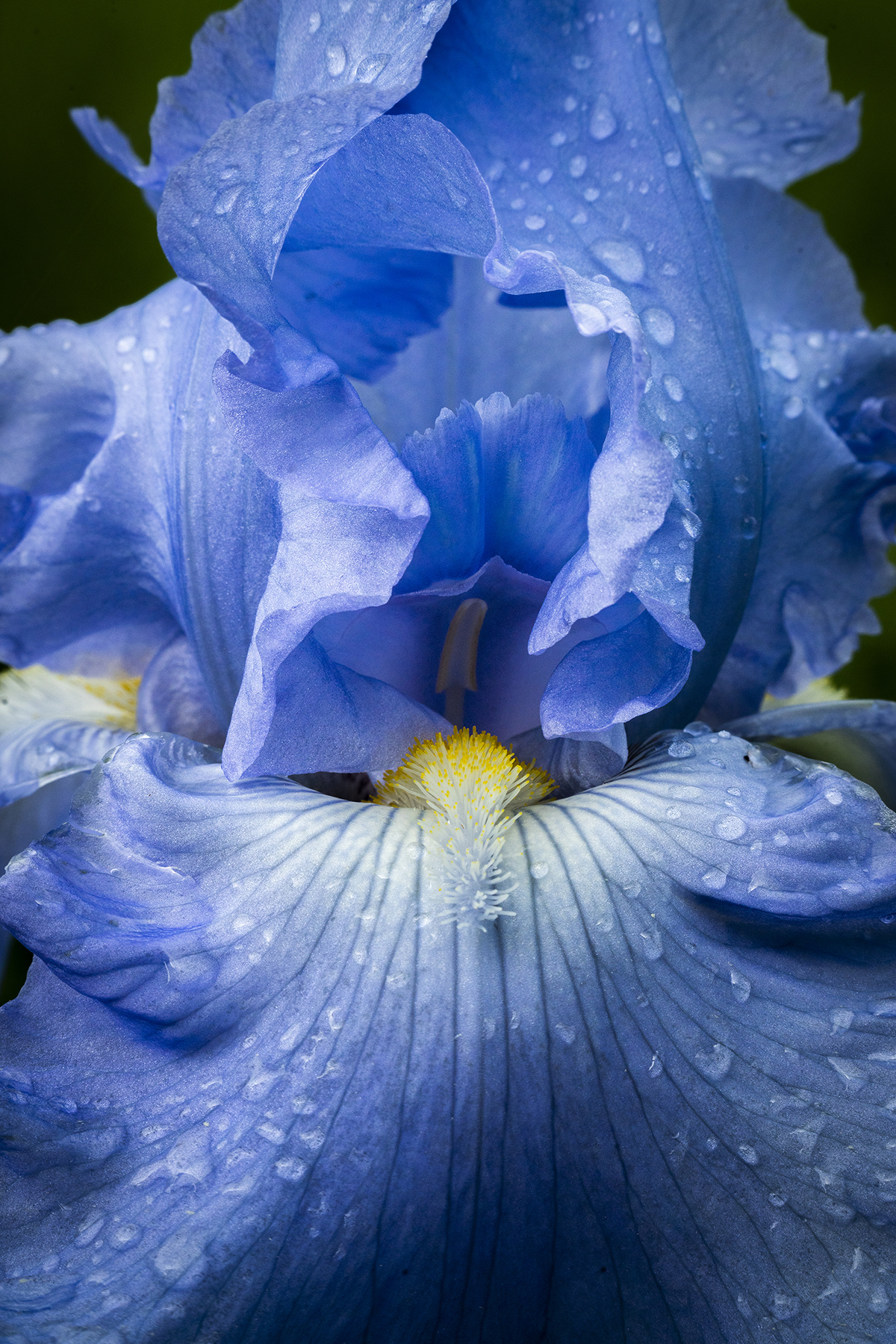
Flower Photography in Overcast and Rainy Weather
You don’t need perfect weather to take stunning flower photos—in fact, cloudy and rainy days are often ideal for macro flower photography. Shooting flower photos on an overcast day helps reduce harsh contrast and brings out subtle details in petals and textures. The soft, diffused light is perfect for capturing the fine structure of blooms without the distraction of deep shadows.
Rainy days offer unique creative opportunities for close-up flower photography. Water droplets naturally cling to petals and leaves, adding compelling visual elements to your images. These raindrop-covered flower photos introduce a refreshing and dramatic look that’s hard to replicate artificially.
How to Shoot Flowers in Harsh Sunlight
If you’re photographing flowers on a sunny day, patience and timing are key. Wait for the sun to dip behind a cloud to create softer, more balanced light that enhances your subject without overexposing highlights.
Using a polarizing filter for flower photography can further improve your results. A polarizer helps control reflections, reduces unwanted glare on wet petals or leaves, and intensifies natural colors. This creates a more saturated flower image with deeper greens and richer hues—perfect for macro garden photography in bright conditions.
TIP 3: Camera Settings for Macro Flower Photography
Handholding your camera is difficult when you are shooting at a shutter speed less than the focal length of the lens. For example, if you are shooting at 100mm, your shutter speed must be at least 1/100th sec to avoid blurriness from camera shake. Use a tripod if you cannot reach a short speed required for your lens. Use a low ISO for the best image quality.
TIP 4: Play with Depth of Field
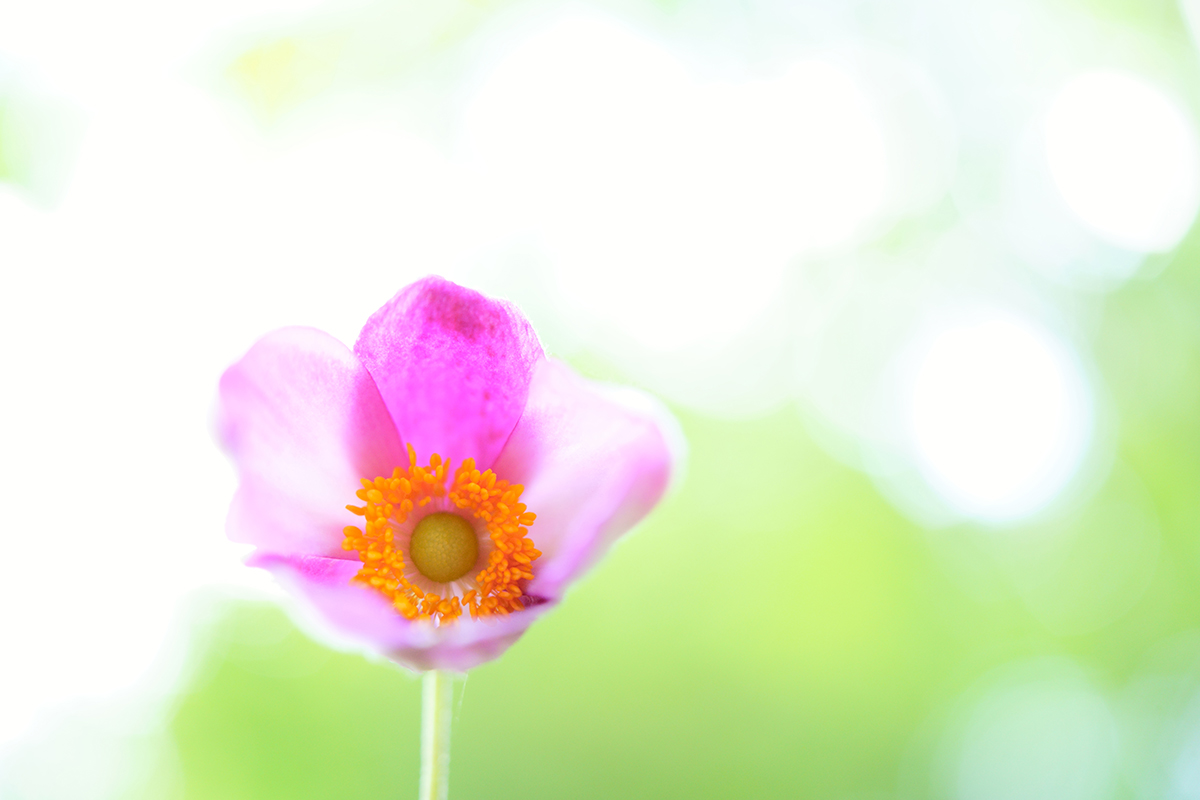
Control Depth of Field with Aperture Settings
To create visually striking macro flower photos, experiment with the aperture on your lens to achieve the look you envision. Using a wide aperture (like f/2.8 or f/4) creates a shallow depth of field, beautifully blurring the background and drawing attention to your flower as the main subject. This technique helps isolate the flower from distracting elements in the background, making it stand out with artistic clarity.
Use Telephoto Lenses for Soft Backgrounds
A shallow depth of field becomes even more pronounced when using a telephoto focal length and positioning your camera close to the flower. This combination enhances background blur, a highly desired effect in macro flower photography. However, it’s important to review your image on the LCD screen to ensure the key parts of your flower are in sharp focus—particularly the petals, center, or water droplets.
When to Stop Down for Better Focus
If too much of the subject appears soft, stop down your aperture to f/8 or f/11. These settings increase your depth of field, ensuring more of the flower remains sharp while still maintaining some background separation. Because you’re shooting close-up, the background will naturally soften, even at smaller apertures.
Background Considerations in Flower Photography
If your background is already minimal—such as a clear blue sky, green lawn, or shaded foliage—you may not need extreme blur. In these cases, stopping down your aperture won’t hurt the aesthetic and can give you a sharper subject. Evaluate each scene to strike the right balance between background blur and subject sharpness, a key aspect of compelling flower photography composition.
TIP 5: Creative Composition Tips for Flower Photography
Experiment with Angles for Unique Flower Photos
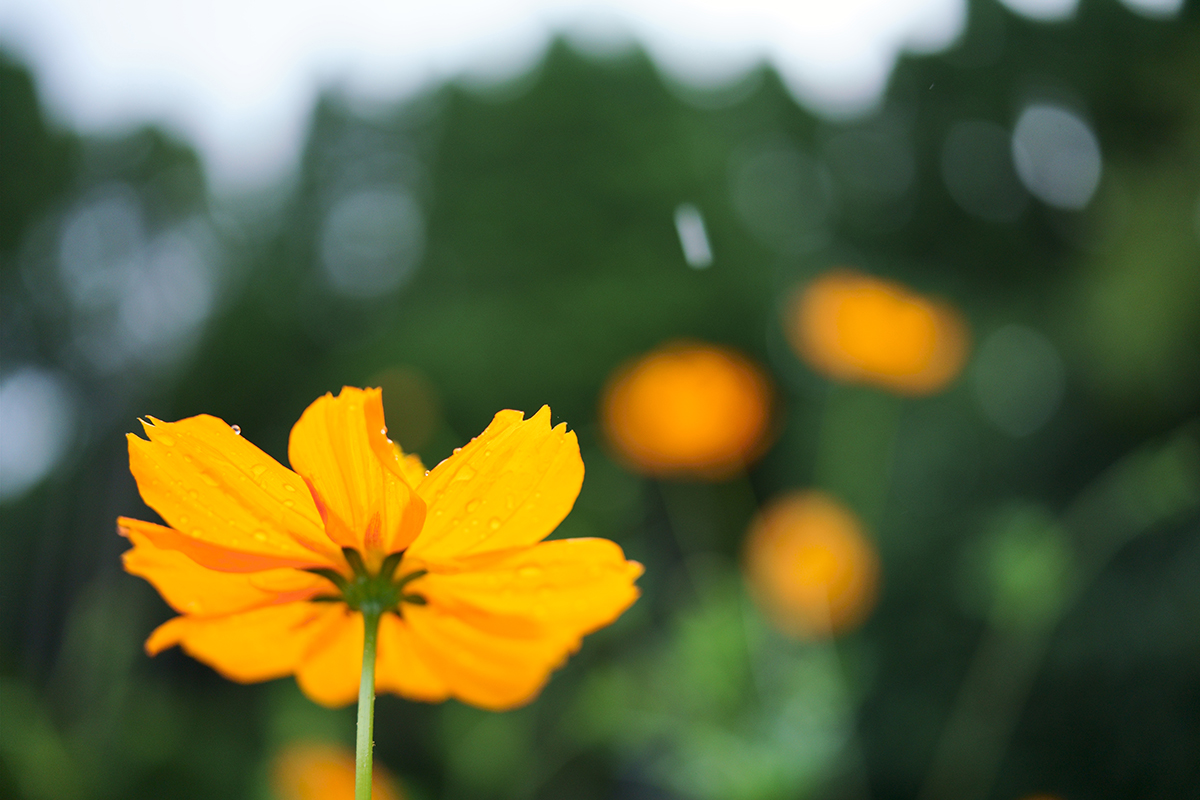
Strong flower photography composition starts with perspective. Move around your subject to explore creative angles—photograph flowers from above, below, or straight on. Get low and shoot from a ground-level view for a fresh, immersive perspective, or lie on your back to capture upward-facing blooms with sunlight streaming through the petals.
Frame Your Flower Intentionally
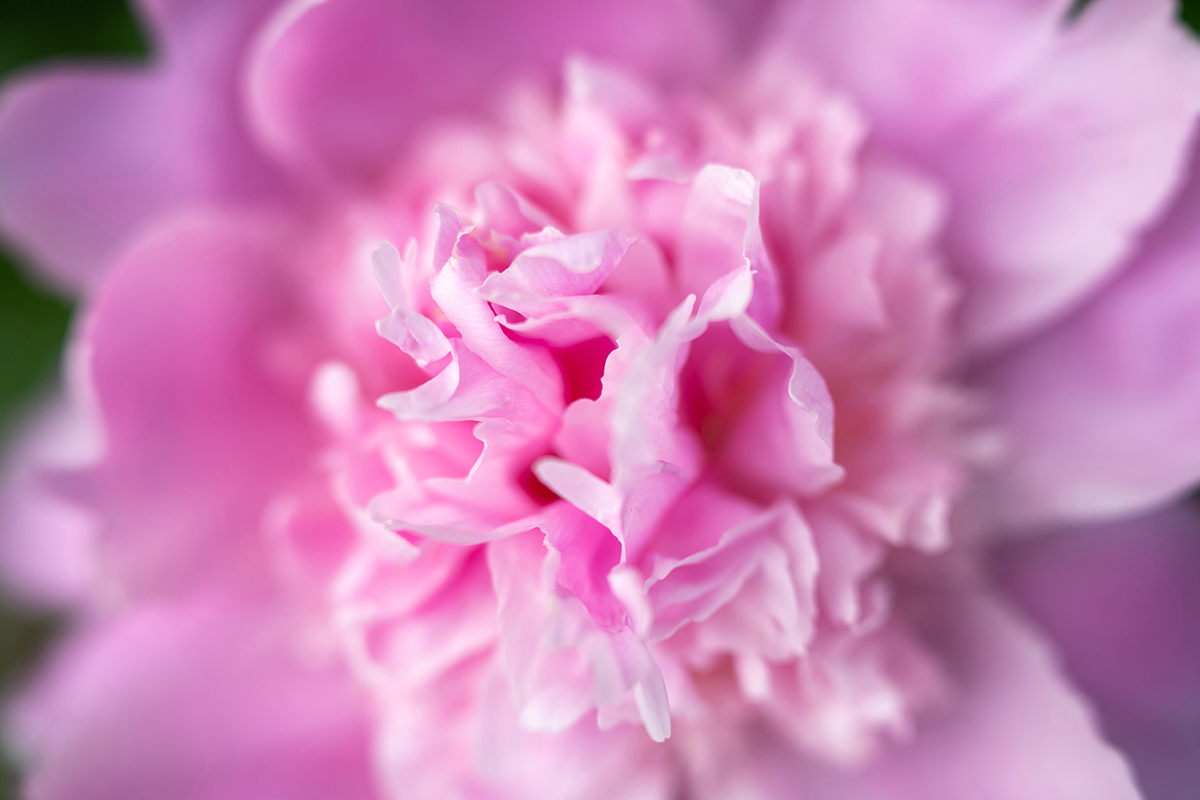
Think about how to frame your flower photo. You don’t need to include the entire flower—sometimes, cutting off petals or filling the entire frame with part of the bloom creates more impact. Get close for macro shots and eliminate distractions. Filling the frame brings the viewer into the image and emphasizes fine details.
Use the Rule of Thirds and Power Points
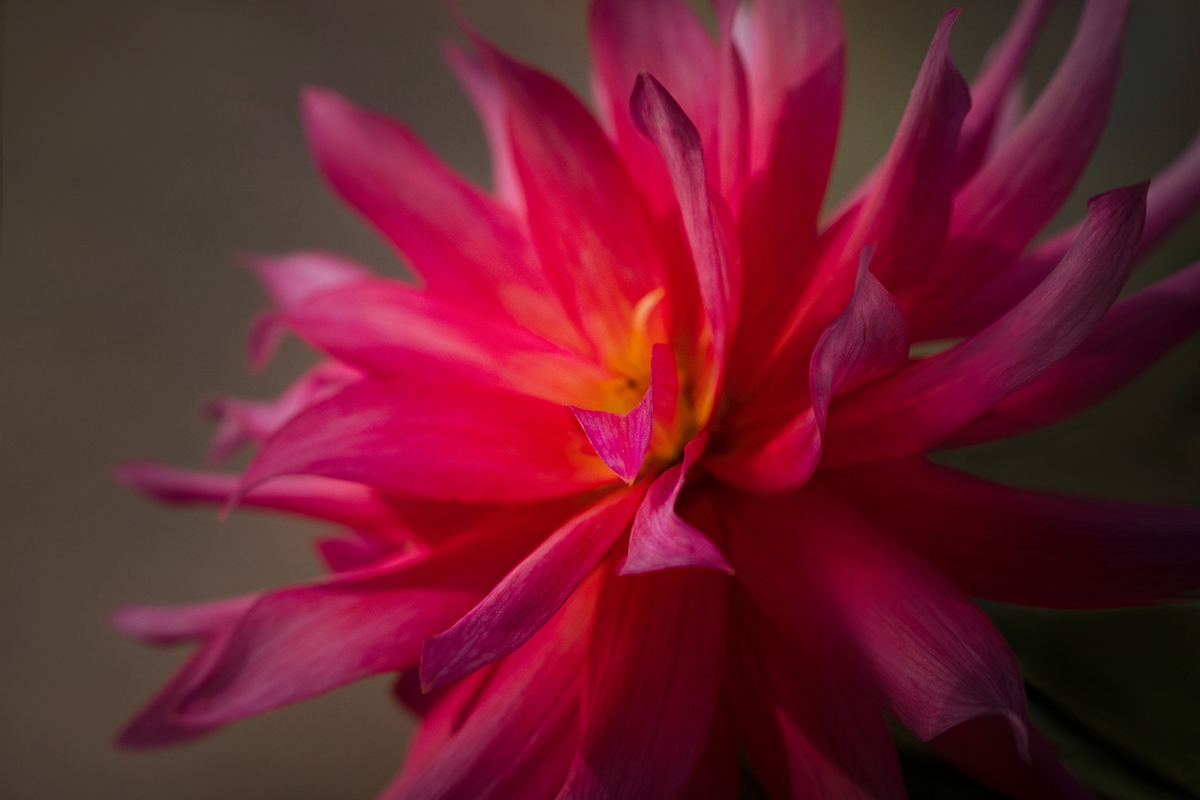
Avoid always placing the flower in the center. Use your camera’s gridlines to position your subject on a power point, where the horizontal and vertical thirds intersect. This is a classic rule of thirds composition technique that adds balance and interest.
Control the Background for Better Composition
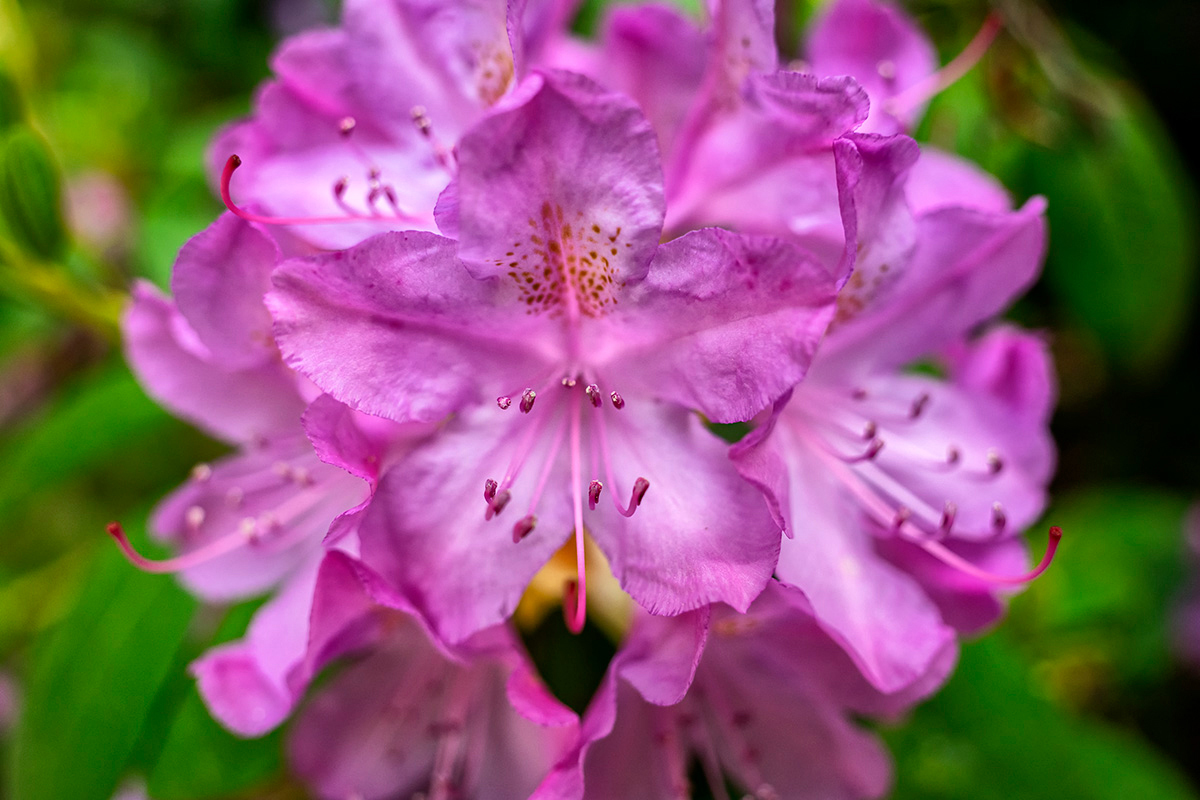
A strong composition includes not just your subject, but also the background in flower photography. Use a simple background like green foliage, blue sky, or shaded earth to make your flower pop. If your background is too busy, try placing a piece of black or gray foam core behind the flower to isolate it and maintain focus on the subject.
Get Closer for Dynamic Macro Flower Shots
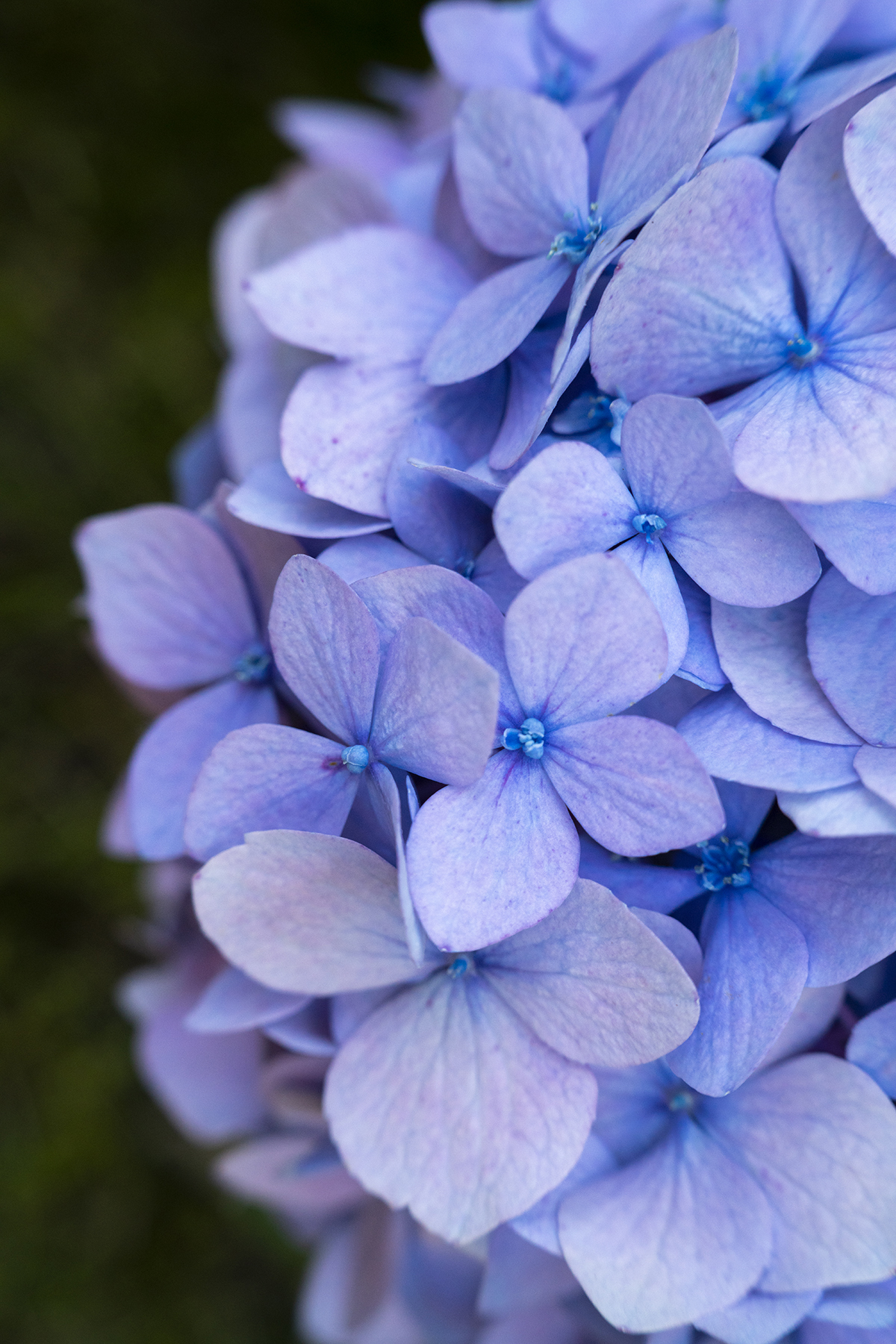
You can never get too close when photographing flowers. The closer you are, the more macro details you capture. Move in to highlight a single petal, the flower’s center, or even abstract textures like the xylem in a leaf. Macro compositions often benefit from extreme closeness, creating a more immersive and artistic result.
TIP 6: Spend Time with One Flower
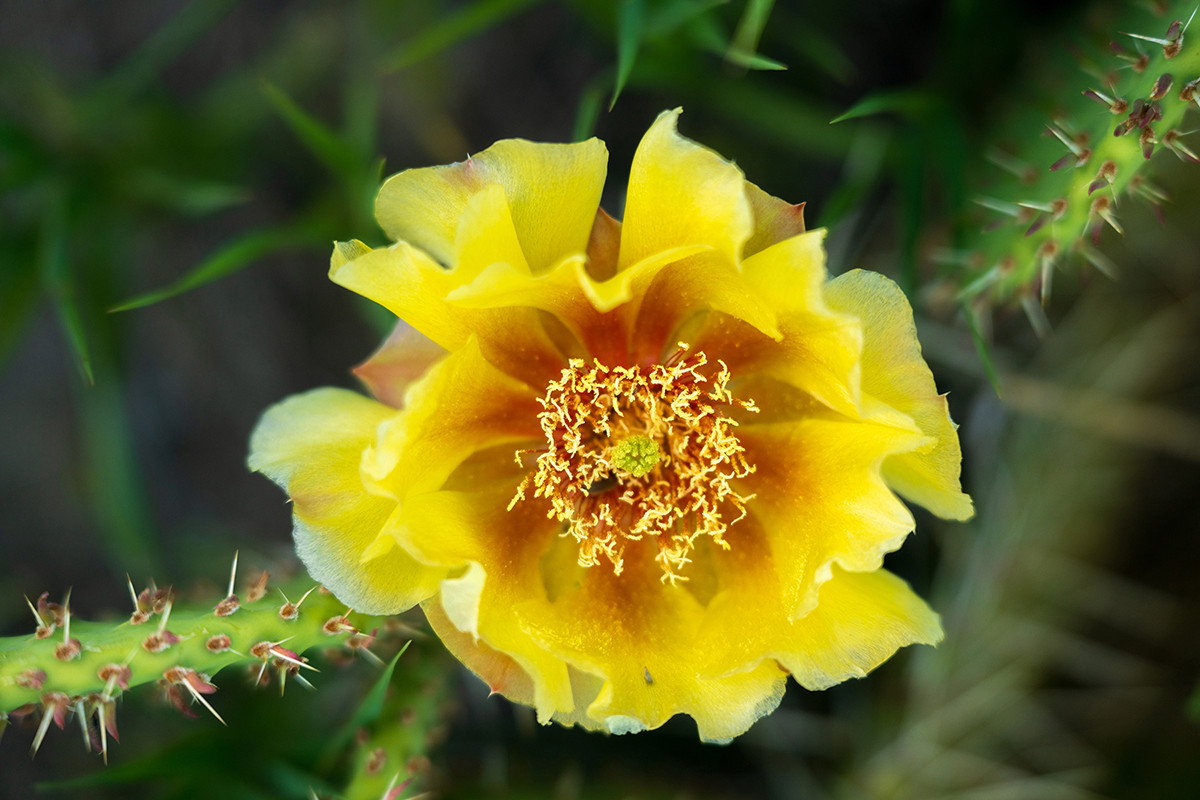
You can create many different types of images with just one subject. Consider photographing one flower for 30-minutes. Shoot it from various angles, fill the frame with a portion of the flower, or pull back to capture the entire plant.
TIP 7: Abstract Flower Images
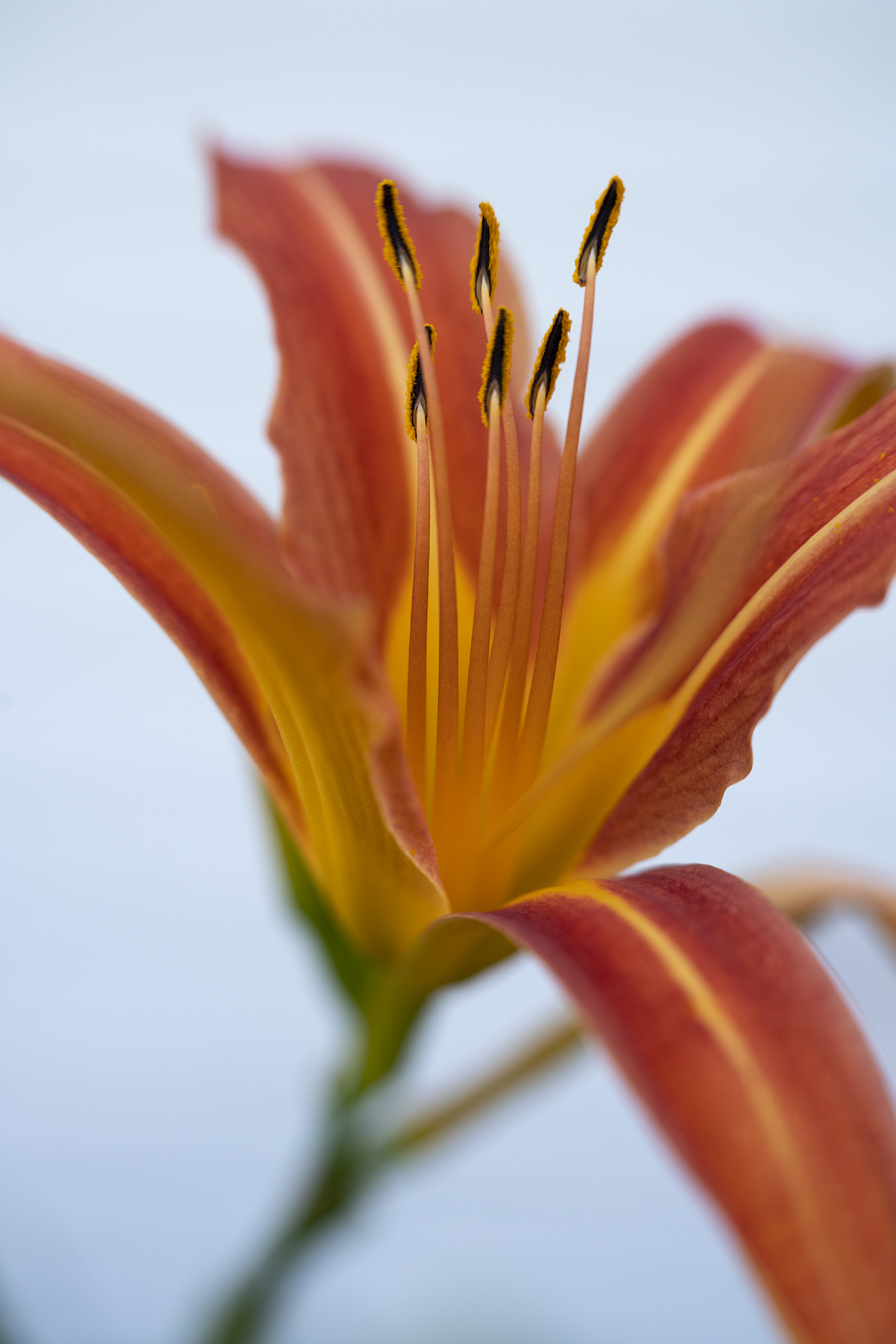
Abstract macro flower photography can sometimes appear chaotic, but with the right approach, it becomes a powerful form of artistic expression. When filling the frame with just one subject—such as a single petal or bloom—look for pleasing patterns and natural symmetry to guide the viewer’s eye. Layering details within the composition adds complexity and invites the viewer to explore multiple focal points within the image.
The xylem, or veins running through a petal or leaf, make an especially intriguing subject. These fine details reveal the internal structure of the plant, showcasing the hidden beauty of how a flower stays hydrated. For more dramatic effect, identify where the light is coming from and reposition yourself to create a backlit macro flower photo that highlights translucency and delicate texture.
These close-up details become the most compelling parts of your photo. Focus on a single, small portion of the petal or leaf, and allow the rest of the image to softly fade into blur. This technique not only emphasizes the subject but also introduces an abstract style that adds depth and mystery to your creative flower photography composition.
TIP 8: Equipment for Macro Flower Photography
Having the right gear can make a big difference in capturing sharp, detailed, and creative macro flower photos. From stabilizing your camera to enhancing your subject with added elements, the right equipment for flower photography helps you elevate your images with precision and control. Whether you’re shooting in your backyard or at a botanical garden, these tools are essential for achieving professional-looking results.
- Use a tripod to avoid blurry photos, especially in low light conditions or when using slower shutter speeds.
- Bring a spray bottle with you when you photograph flowers to add water drops to your images. Water drops on flowers add a compelling visual element to your garden photos. This method lets you carefully control the volume and placement of the water drops.
- Use macro lenses or lenses with a macro feature such as 1:1, 1:2. Macro is any maximum magnification ratio of 1:4 or better. Using a macro or close-up lens can help you capture the small details of a flower. This includes the texture of the petals and the patterns of the stamen. Tamron macro lenses have excellent close-up capabilities. Some of the lenses feature 1:1 or 1:2 macro and excellent minimum focusing distances. These features are perfect for taking pictures of flowers.
Top Lenses for Flower Photography
- Tamron 90mm F/2.8 Di III VXD 1:1 Macro (Model F072) for Sony E-mount and Nikon Z mount mirrorless cameras. This lens features a true 1:1 magnification ratio, making it ideal for capturing life-size macro flower images with stunning detail. This lens delivers sharp focus and excellent performance for both close-up photography and portraits. The lens features moisture-resistant construction and a 67mm filter size.
- Tamron 50-400mm F/4.5-6.7 Di III VC VXD (Model A067) for Sony E-mount and Nikon Z mount mirrorless cameras. This lens has the unique feature of 1:2 maximum magnification at 50mm. The focal length range of this lens is ideal for flower photography in a garden or arboretum where you may not be able to get very close to the flowers. Use the lens to zoom in on your preferred bloom for dynamic telephoto images of flowers. The lens features moisture-resistant construction and a 67mm filter size.
- Tamron 18-300mm F/3.5-6.3 Di III-A VC VXD for Sony E and Fujifilm X series APS-C mirrorless cameras. This all-in-one zoom lens offers a remarkable 1:2 macro as well as 16.6X zoom range. With this lens, you can capture beautiful images of multitudes of blooming flowers as well as close-up images. The lens features moisture-resistant construction and a 67mm filter size.
- Tamron 35mm F/2.8 Di III OSD for Sony E-mount mirrorless cameras. This 35mm prime zoom lens has a fast aperture and 1:2 macro capability for a true macro experience. The lens features moisture-resistant construction and a 67mm filter size.
TIP 9: Post Processing Macro Flower Photography
The level of processing is up to personal preference, but it’s best to keep flower images looking as natural as possible. Adjust the contrast and tweak the highlights. You may wish to sharpen the image in the areas where you want to show the most detail. Apply clarity to make the photo pop more.
TIP 10: Off Season and Dreary Weather
Don’t let bad weather stop you from photographing flowers. You can try photographing flowers indoors if the weather isn’t cooperating. Purchase flowers from a local florist and order additional items like feathers, mounted butterflies, and seashells to create artistic compositions. This allows you to continue practicing your photography skills and experimenting with different arrangements, even when the weather outside isn’t ideal.
Conclusion: Capture the Beauty of Nature with Macro Flower Photography
From delicate petals to intricate patterns, macro flower photography allows you to discover and document the breathtaking details hidden within nature. Every bloom offers a unique opportunity to create close-up flower photos that highlight textures, colors, and structure often missed by the naked eye. By experimenting with light, composition, and perspective, you’ll uncover entire macro worlds in your local garden, backyard, or favorite nature spot. Whether you’re a hobbyist or seasoned photographer, flower photography invites you to slow down, connect with nature, and capture its fleeting beauty—one petal at a time.
Learn about these lenses and more at an authorized Tamron dealer in your area or visit the TAMRON Store today.
More Photo Tips | Watch Videos | Learn More About Tamron Lenses | Photo Gallery
